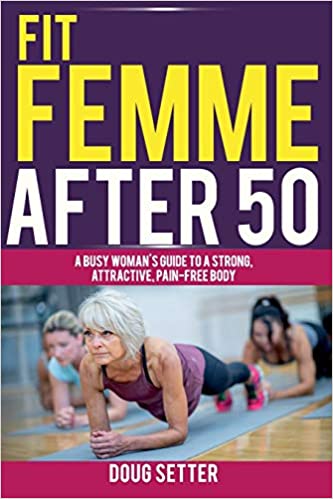A jolt of fear shot through me when I saw her slumped against a gym wall. Checking her pulse and her forehead, I asked what my 60 plus-year-old personal client had done.
She said that after her exhausting workout, she had decided to practice a HIIT routine, on the treadmill.
“I read about it last night on the internet,” she had explained. “It was supposed to burn more fat.”
Her attempted HIIT was one of the several workouts that women over 50, need to initially avoid or approach with caution. Even though many fit women perform them, I still refer to the Faulty Five which are: HIIT, Plyometrics, Hard surface training, Martial Arts and Yoga.
Workouts to attempt with caution
- HIIT. High Intensity Interval Training is a usually a series of different exercises designed to improve muscular endurance and strength in a short period of time. While I have used it with good results, I have also had difficulty when involving weights. One time while performing a series of barbell cleans, presses and front squats, I became tired and sloppy. I went too deep on the front squat and pain shot through my right knee. And no half marathon that summer. If you are going to perform HIIT, ensure that your fitness level is up to it and you follow the correct movements, preferably under professional supervision.
- Plyometrics. Used by athletes, special military forces and specific sports training. This system involves a number of jarring movements like clapping your hands between push ups or box jumps. Good for explosive force like in sprinting. But, one wrong move and you can take weeks or longer to recover.
- Hard Surface Training. I have lost too many good, middle-aged cardio kick-boxing students from training on cement floors. Relocating to rubber or wooden floors was much easier on people’s joints (including my own). I know from my own experience that running on concrete and pavement led to back, hip and joint pain. Now, in my sixties, I stick to running on sand, grass and trails. To further drive this point home: I once met a professor who had been a doctor for the 2010 Vancouver Winter Olympics. As a student, the doctor had run over 90 miles a week, mostly on pavement. Now he walks with the aid of two canes and admits that his skeletal system has been weakened from the excess pounding on his body.
- Martial Arts. Even though martial arts are usually well-rounded health and exercise systems, do not expect to advance as quickly as your younger peers. Trying to drop into a full-splits, for example, can leave you with scar tissues and injuries. Even the older martial artists who are in their 70’s, 80’s and 90’s know how their limitations. The key is to train progressively and under the guidance of a trained instructor. Special note here, that even the softer, internal martial art styles, like Tai Chi can also injure you if performed incorrectly. By dropping into a low stance, without a proper warm up, sent me to several months of physiotherapy before I stopped limping. Try Tai Chi for Seniors, here.
- Yoga. I like yoga and often consult a couple of instructors well into their late 60’s. But, again, yoga is a progressive system that needs to be learned one phase at a time. Just because a 20-year old can drop into a contortion or a headstand does not mean that someone over 50 can do the same without injury. Besides, when the 20-year old injures themselves, they tend to heal faster. Yoga requires mindfulness and concentration, which is what makes it so effective when performed correctly.
In summary, an older body will generally not adapt or recover as quickly as a younger person’s body when undergoing intense, jarring, or body-shocking movements. Aging muscles, tendons, and joints take several times longer to recover than their young counterparts. Train smarter, under competent instruction, and progress will come.
Editor note: Doug Stetter is the author of Fit Femme After 50: A Busy Woman’s Guide to a Strong, Attractive, Pain-Free Body. In the book are practical and safe exercises for older women to become functionally fit, as well as background on how your body changes as you get older, nutrition suggestions, pain management, positive reinforcement, mindset, and more.
What types of workouts do you enjoy doing the most? Have you experienced pain from doing them? Please leave a comment below.




Leave a comment and tell us what you think